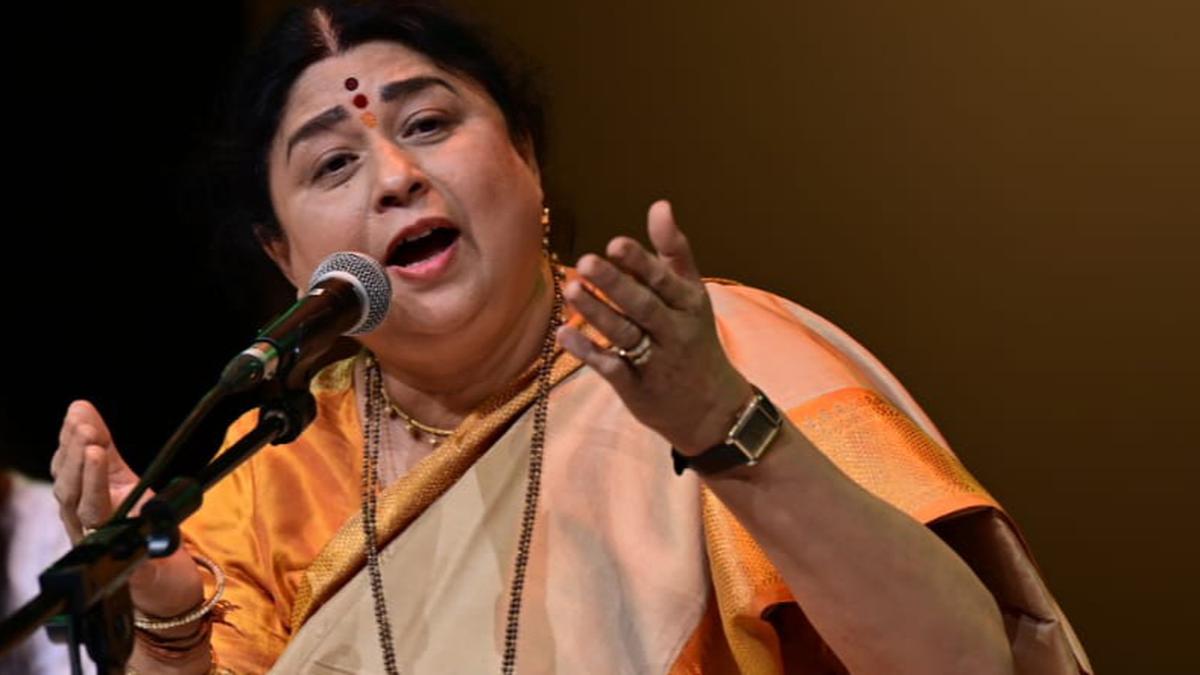
Kumar Gandharva’s centenary celebrations began with a two-day festival in Mumbai
The Hindu
A two-day festival took place in connection with the centenary celebrations of Pt. Kumar Gandharva
The Tata Theatre at the National Centre of Performing Arts (NCPA), Mumbai, was packed with people, who had come to celebrate Pt. Kumar Gandharva’s birth centenary. The momentous occasion was marked with the inauguration of ‘Kaaljayee’, a year-long, multi-city celebration. It began with a two-day festival at NCPA, organised by the Kumar Gandharva Pratishthan Devas and supported by Pancham Nishad and Ministry of Culture.
The first thing that caught eye was the aesthetic decor of the stage, which had notations of the maestro’s composition in raag Saheli Todi in the backdrop. The event was inaugurated by Kumar Gandharva’s friend, the 93 -year-old Shirish Patel. On the occasion, Vinay Sahasrabuddhe, director general, Indian Council of Cultural Relations (ICCR), announced that plans are afoot to hold an International seminar on Kumar Gandharva. Ashok Vajpeyi recited a poem from his book Bahuri Akela, written on Pt. Kumar Gandharva. He also launched Va Ghar Sabse Nyara: Jeevan Charit, a biography of the legendary vocalist, published by the Raza Foundation.
The festival opened with Bhuvanesh Mukul Komkali’s performance. Son of Mukul Shivaputra and grandson of Pt. Kumar Gandharva, Bhuvanesh was trained by Vasundhara Komkali and Madhup Mudgal.
Bhuvanesh opened his concert with ‘Iss Jag mein tum bin kaun…’ in raag Bhimpalasi with accent on its jiva swara, ‘madhyam’. Conventionally a raag opens with ‘shadja’, creating the foundation on which the edifice of the raag is built. Rendering the composition set to the medium tempo of Rupak taal, Bhuvanesh treated the raag meticulously and continued with a Teen taalo Tarana in the same raga. Shri-Kalyan, created by Kumar-ji, combining the pathos of Shri and the romantic feel of Kalyan, came up next as an exemplary contrast. The bandish ‘Dekho ri ruta phoolan lagi…’ depicted spring during the raag vistar, interspersed with taans. This set the tone for ‘Piharva aavo tum’, a madhya drut teen taal bandish in Yaman, addressed as ‘Kalyan’ by the late maestro. Prashant Pandav on the tabla and Niranjan Lele on the harmonium provided perfect support.
The evening on day two began with Kalapini Komkali’s Lagan Gandhar, a unique raag created by her father, Kumar Gandharva. It had not just both the ‘gandharas’ and ‘nishads’, but also a third shruti in between the shuddha and komal gandhar that the maestro had envisioned as ‘Komalaa Gandhar’. This added a personal dimension to the vitality of the raga. He had demonstrated this aspect of the raag to his friend Pandhari Nath while creating it. He had said, “Is mein gaandhar ki lagan hai”, therefore it was named Lagan-Gandhar.
Kalapini presented two compositions in this challenging raag — ‘Sudh na rahi’ set to Vilambit Ek taal and ‘Baje re mora jhaanjharawa’ in Madhya (medium tempo) Teentaal.
Her next presentation was a Jod-raag, Kedar-Nand, popularised by her father. She started with an alap in Kedar that seamlessly merged into Nand. Kalapini rendered the composition ‘La de beera mharo dhani chunari’ followed by his famous bandish in Nand “Ab to aa ja re’, before concluding with Kabir bani and a bhajan.













